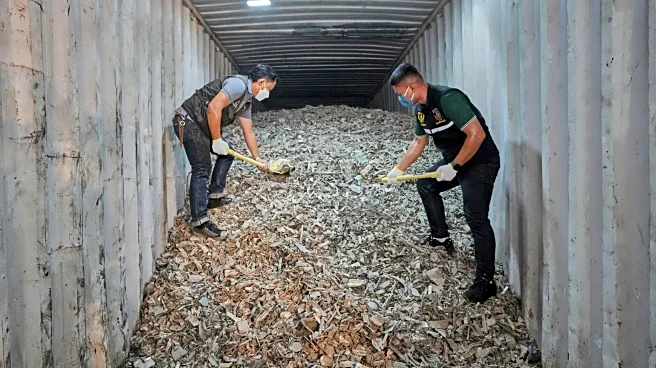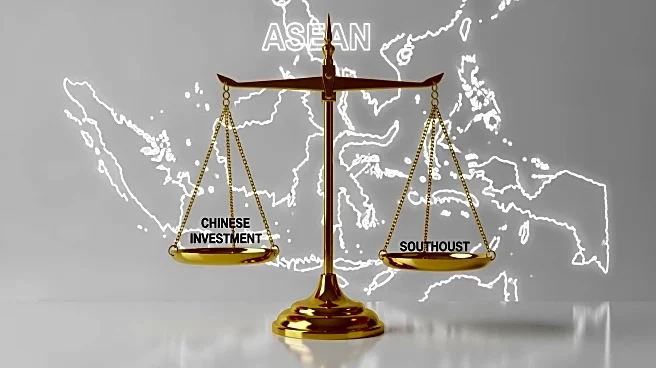What's Happening?
A recent study published in Nature examines the demographic history of Southeast Asia and Near Oceania by leveraging genetic data from Remote Oceania. The research aims to test models of ancestry for Southeast Asians by comparing genetic data with archaeological
and radiocarbon evidence. The study estimates the ages of settlement in Remote Oceania and contrasts them with the more complex history of Southeast Asia. It challenges the 'leapfrog' model of migration, suggesting that early settlers likely spread through the Solomon Islands rather than bypassing them. The research also explores the origins of the Polynesian motif, a genetic marker, and its implications for the 'out-of-Taiwan' model of Austronesian expansion.
Why It's Important?
This study is significant as it provides new insights into the migration patterns and ancestry of Southeast Asian populations. By using genetic data to test historical models, the research offers a more nuanced understanding of human migration in the Pacific region. The findings challenge existing theories about the spread of the Lapita culture and the role of Austronesian speakers, suggesting a more complex interaction between local populations and incoming migrants. This has implications for the study of human history and the understanding of cultural and genetic exchanges in the region.
What's Next?
Future research may focus on further testing the hypotheses presented in this study, particularly the genetic and archaeological evidence for early settlement patterns. Additional genetic data from other regions could provide more clarity on the migration routes and interactions between different populations. The study also opens up possibilities for exploring the cultural and technological exchanges that occurred during these migrations, which could reshape current historical narratives.
Beyond the Headlines
The study highlights the importance of integrating genetic data with archaeological and linguistic evidence to understand human history. It underscores the complexity of migration patterns and the need to consider multiple lines of evidence when reconstructing past events. The research also raises questions about the role of gender in migration, as indicated by the distinct male and female genetic markers, suggesting a potential sex bias in historical migration patterns.













